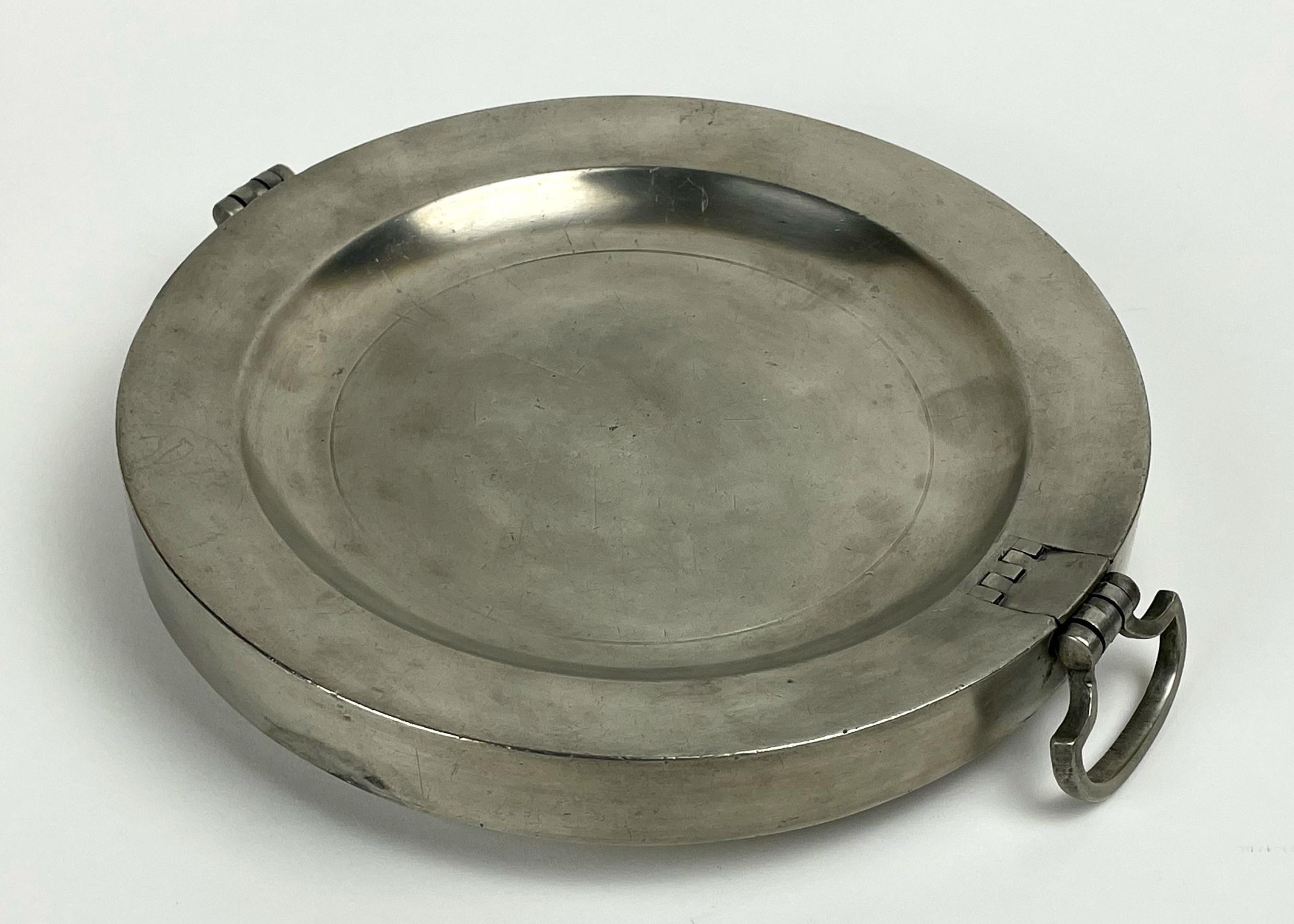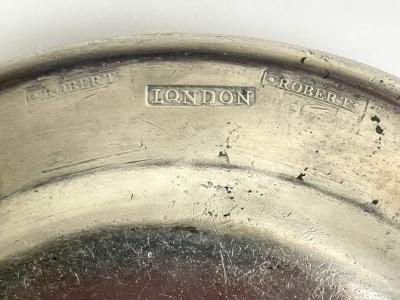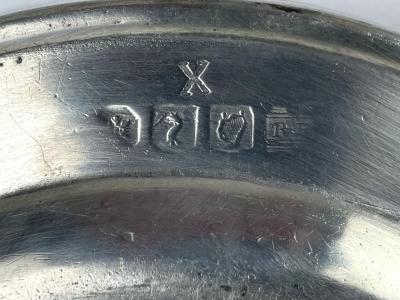Warming or hot-water plate
Bristol, England
1780-1793
Maker
Robert Bush Sr (working 1755-c. 1800)
Measurements
1-5/8 in x 12-1/2 in (handles extended) x 9 in (dia)
Materials
Pewter
Credit Line
Historic Odessa Foundation
Accession Number
2024.27
Comments
This warming or hot-water plate is constructed of two cast plates separated from each other by a one-inch high circular ring to create a flat container for hot water to keep food warm. Hot water was introduced through a hinged flap cut into the upper plate at one of the two C shaped handles hinge to the body. The booge--the rounded edge of the plate bottom--was hammered to compress the metal, thereby making it stronger at this location, where the metal might dent or become misshapen by use.
The underside of the warming plate has several touchmarks of the maker. At one side, the maker stamped a large “X,” a widely used designator for quality. (Some pewter was stamped with “XX,” suggesting extra quality.) Below the X are four hallmarks, including a harp and “R · B” for Robert Bush. The opposite side has two “ROBERT / BUSH” touchmarks with “LQNDON” in between. The Bush touchmarks are legible only along the top, leaving the image of a griffon [signifying Britannia] and wording along the bottom too faint. The misspelling of London was intentional. It suggested London manufacture to the unwary but avoided adherence to guild regulations for metal purity. Bush exported much of his pewter to the American colonies and later to the United States. In fact, his pewter had a higher lead content than allowed by the London pewter guild.
Robert Bush's son and namesake also made pewter in Bristol. Both Bush Sr and Jr worked in various partnerships through their careers.


